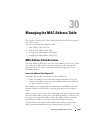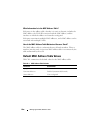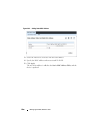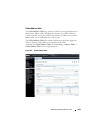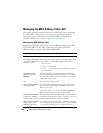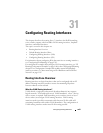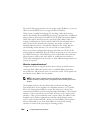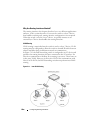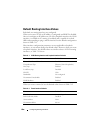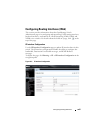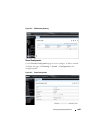
Configuring Routing Interfaces 1023
What Are Tunnel Interfaces?
Tunnels are a mechanism for transporting a packet across a network so that it
can be evaluated at a remote location or
tunnel endpoint
. The tunnel,
effectively, hides the packet from the network used to transport the packet to
the endpoint. This allows for the transmission of packets that the transport
network cannot process directly, such as in one of the following cases:
• The packet protocol is not supported.
• The packet is in an incompatible addressing space.
• The packet is encrypted.
Dell Networking series switches support tunnels to encapsulate IPv6 traffic in
IPv4 tunnels to provide functionality to facilitate the transition of IPv4
networks to IPv6 networks.
The switch supports two types of tunnels: configured (6-in-4) and automatic
(6-to-4). Configured tunnels have an explicit configured endpoint and are
considered to be point-to-point interfaces. Automatic tunnels determine the
endpoint of the tunnel from the destination address of packets routed into
the tunnel. These tunnels correspond to Non-Broadcast Multi-Access
(NBMA) interfaces. A configured tunnel interface has a single tunnel
associated with it, while an automatic tunnel interface has an infinite number
of tunnels (limited only by the address encoding scheme).
Because tunnels are used as logical interfaces, you can define static routes
that reference the tunnels. Additionally, dynamic routing can be configured to
use the tunnels.



